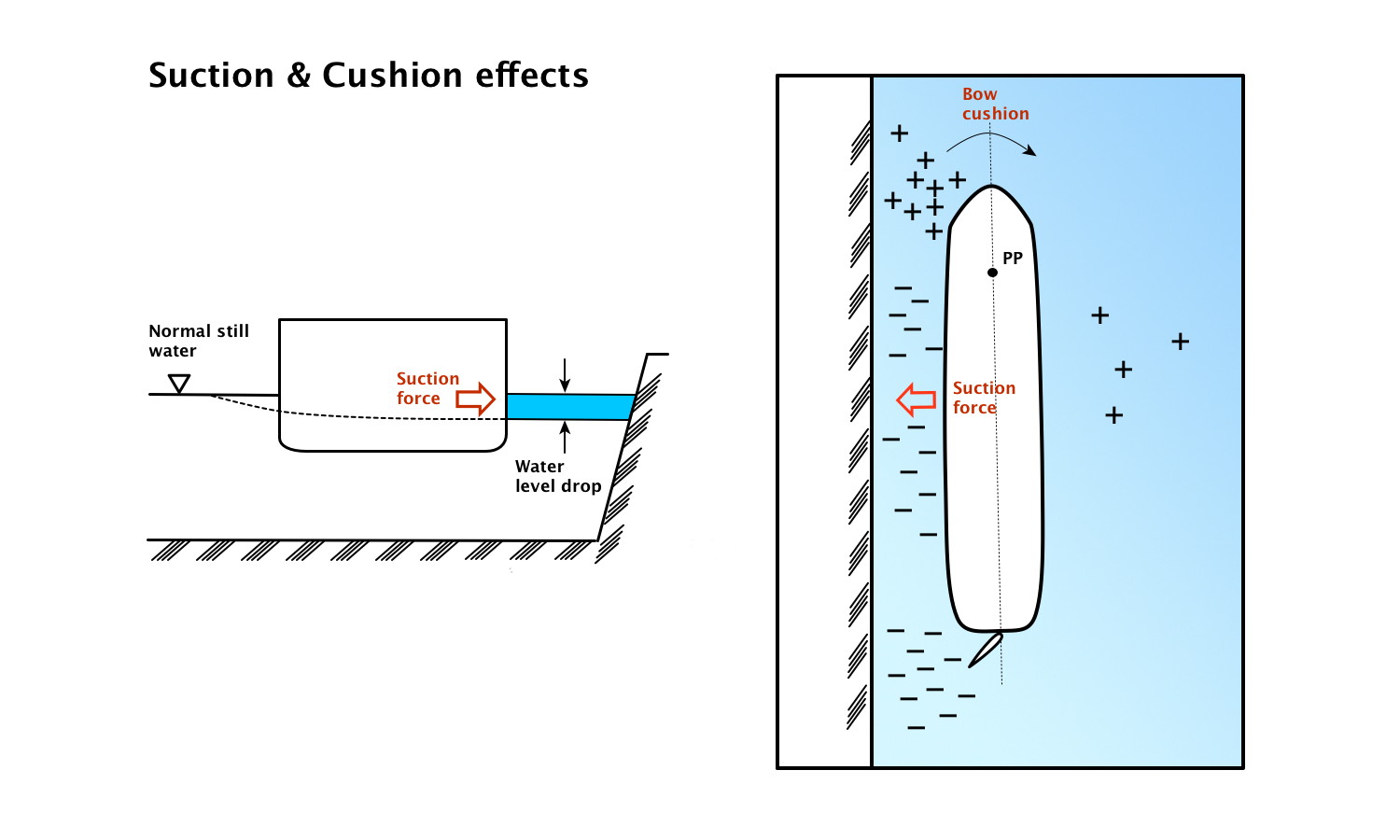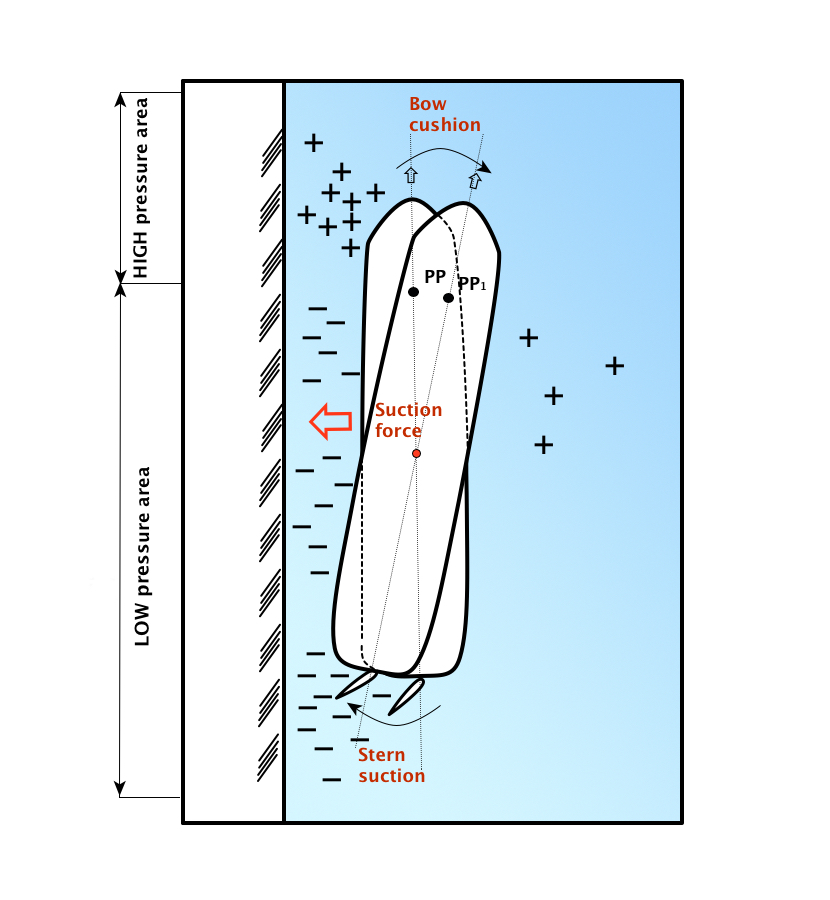Suction – Cushion
It is necessary to anticipate this chapter, remembering that in port navigation and rivers and channels, the commanders must observe the rules to prevent collisions at sea contained in COLREGs 72.
In particular, in rule 9, the convention states: ‘a ship that proceeds along the course of a narrow canal or navigable canal is obliged to remain “as close as possible to the outer limit of the canal or navigable canal which is on its starboard side”. Where ever it is possible.
Furthermore, we must clarify the difference between natural canals (channels) and artificial canals (canals). Although the waters narrow, creating pressure forces in both, in the ‘channels’, the effects amplify and dissipate faster than in the ‘canals’ where the artificial and regular banks create constant forces. In contrast, in the natural channels, irregular banks, apparently similar, produce different effects.
These effects are attractions and repulsions (suction – cushion), and we will graph them with + or – signs to identify the pressure or depression they generate.
Bank suction and cushion
Fluid dynamics (Venturi effect) applied to the maritime field can be translated as:
“The bank attracts a ship that moves in a canal passing close to the bank itself”.

This phenomenon derives from the water level decrease between the ship and the canal. At the same speed: the shorter the distance between the vessel and the canal side, the greater the Venturi effect.
The difference in level between the two sides of the ship causes the suction force that draws the ship’s hull closer to the side of the canal.
The shape of the hull decisively influences this behaviour, and, in most cases, we face a situation of this type: at the bow, in the area between the hull and the side, we have a rise in level concerning the outer side of the ship, while continuing along the hull there is a lowering that reaches its maximum aft, where we have an inner level lower than the outer one.

When proceeding at high speed at a distance from the side of the canal close to the width of the ship’s hull, the effect may be so strong that the use of the rudder would be insufficient to counter it. For this reason, when manoeuvring in these conditions, it is strongly recommended to proceed at a slow speed.
When a ship nears an extremely shallow water depth, such as a shoal, she is likely to go towards it and suddenly violently away. It is named: smelling the ground.
In the unfortunate hypothesis of loss of control due to these effects, slow speed over ground guarantees engine power reserve that helps make the rudder more effective: the classic short “kick ahead”, efficient and held for a time insufficient to increase the speed of the ship.
The following chapters will see how these forces can facilitate some manoeuvres typical of canals and rivers or confined waters.
